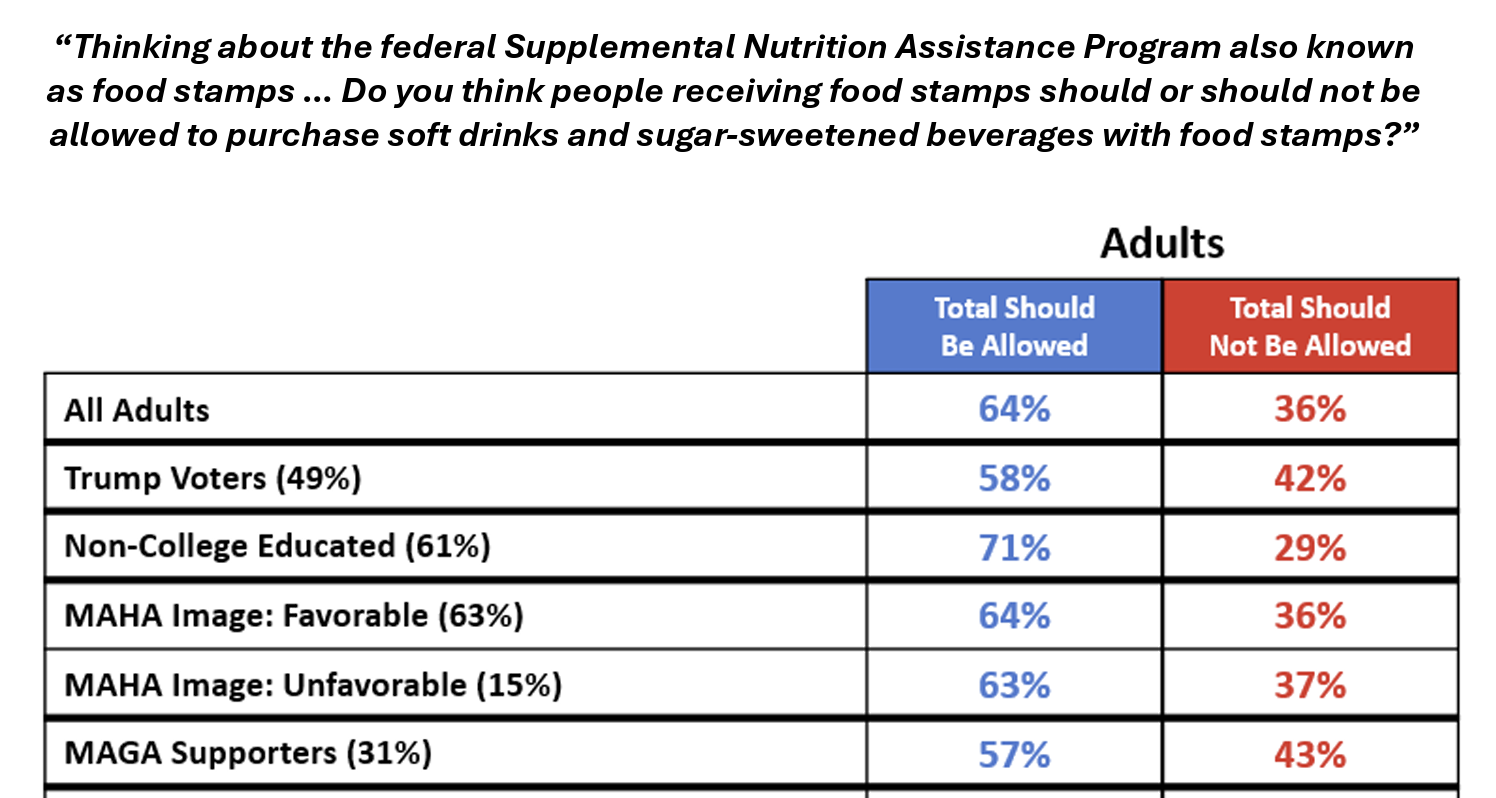When it comes to how low-income families use their benefits, it turns out Americans don’t want to play Big Brother about sugary beverages.
That’s the finding of a new poll from Public Opinion Strategies, on behalf of American Beverage, which asked if people receiving Supplemental Nutrition Assistance Program (SNAP) benefits, commonly called “food stamps,” should be able to use them for soft drinks and sugar-sweetened beverages.
A solid majority (64 percent) said yes, including 58 percent of those who voted for President Donald Trump in the 2024 election, and 71 percent of Americans without college degrees.

A national online survey of 808 adults, with a credibility interval of +3.93%. The survey was conducted December 12-17, 2024, by Public Opinion Strategies.
Interestingly, 64 percent of those who have a favorable view of RFK, Jr’s Make America Healthy Again (MAHA) movement oppose banning sodas from SNAP benefits.
Traditionally, Republican voters have been quick to support cuts or restrictions on welfare programs. But now party members say the change in the GOP’s base is changing the political calculations.
For example, House Speaker Mike Johnson (R-La.) and Rep. Hal Rogers (R-Ky.) represent districts where a large portion of residents receive government benefits.
And a group of Republican members of Congress wrote a letter to Johnson urging the House to avoid cutting SNAP benefits.
“While we fully support efforts to eliminate fraud, waste, and abuse, we must ensure that assistance programs – such as SNAP – remain protected,” they wrote`. More than 22 percent of Latin families in the U.S. have used SNAP.
John Burnett is First Vice Chair for the New York State Republican Party, and a Black leader in the GOP.
“President Trump forged a broad coalition of support to win the White House. It was something only he could do, but the entire party benefited,” Burnett told InsideSources. “Now, as Congress and others contemplate new policies, they need to be smart to not alienate working class individuals and families – the very voting bloc that brought Republicans success in 2024.”
SNAP accounts for nearly 68 percent of the Agriculture Department’s nutrition assistance spending, according to federal statistics.
After hovering between $60 and 80 billion through most of the 2010s, spending skyrocketed during the pandemic as extra benefits were added. SNAP spending was $127 billion in 2023, and $112 billion last year as pandemic benefits expired. The program gave food stamps to 42 million Americans.
Rather than limiting how the benefits can be used, the libertarian Cato Institute has suggested the food stamp program be turned into a fixed block grant for states and increase work retirements.
House Agriculture Chair G.T. Thompson (R-Pa.) said this month he does not expect SNAP benefits to be cut as Congress hammers out a budget resolution.
In a statement, American Beverage noted it’s not Trump who is proposing these restrictions.
“Working-class families and individuals across America rose up to vote for President Trump on the promise of a new era that would lift them up, not leave them behind again. Proponents of SNAP restrictions would betray these voters and that promise.”

